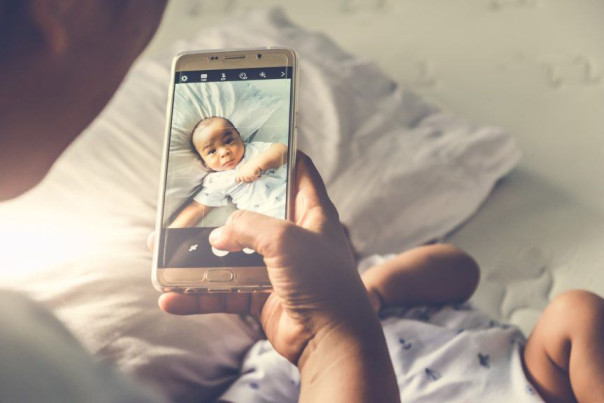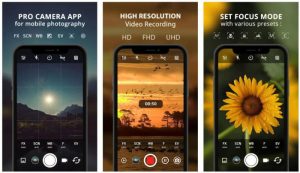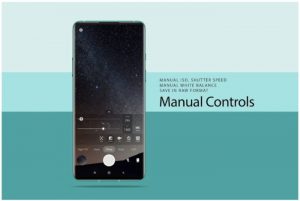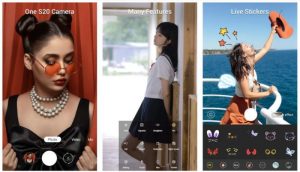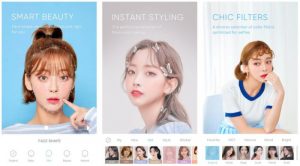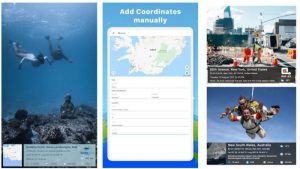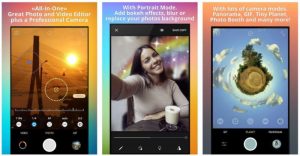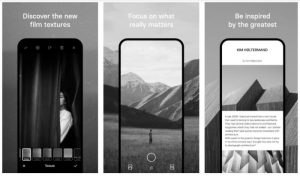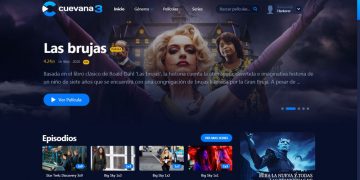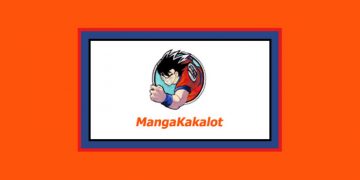Despite variable hardware and camera specs, most Android devices’ native camera software is surprisingly good for common photography activities. However, some native camera programmes, particularly those from lesser-known manufacturers, have poor image processing and limited functionality.
Others, such as poor lighting or macro photography, are just unsuitable for specific conditions. Fortunately, the Google Play Store has a plethora of camera app choices.
We’ll go over some of the greatest options on this list, from camera applications with SLR-level manual controls to ones with built-in geotagging or other niche-but-useful features.
Before we get started, keep in mind that because there are so many various Android devices with varied hardware and setups, your overall experience with these apps may be different. Also, many advanced camera functions (such as manual controls) rely on the Camera2 API, so be sure your device is compatible.
1. Best Professional Quality Camera App: PRO CAM X
PRO CAM X is currently the best Android camera software for people looking for professional-level shot control and customization capabilities. Exposure adjustments like adjustable ISO, white balance, and shutter speed are among its most essential features, giving you far more control than the stock camera. Slow shutter speed effects like light trails and motion-blurred waterfalls can also be achieved using them.
One of the trademarks of a photo taken with an SLR camera is bokeh, or background blurring. You may accomplish this look with the PRO CAM X app’s manual focus controls, which allow you to adjust the focus point toward or away from the background. The ability to export to high-resolution formats like RAW and 4K goes well in hand with the PRO CAM X’s professional functionality.
We’ve barely scratched the surface of everything the app has to offer. Multiple grid displays, real-time photo filters, geotagging, burst mode for making time-lapse videos, and the option to customise hardware volume keys to do different photography duties are among the other handy features.
Overall, the PRO CAM X has everything you’ll ever need to take professional-quality images on Android, and it’s the closest thing you’ll find on a smartphone to an SLR. The pricing is very affordable, though if you prefer something free, you can buy the Lite edition with fewer features.
Pros
- Robust SLR-level manual exposure and focus controls
- Output to high-resolution formats
- Useful features like grid displays, filters, and geotagging
Cons
- Features and interface can be overwhelming for casual users
2. Best Free Manual Camera App: Footej Camera 2
If you’re unhappy with your stock camera app but can’t justify spending money on a solution, Footej Camera 2 is a great free alternative to PRO CAM X. Professional features are combined with a streamlined, user-friendly UI that isn’t as cluttered as PRO CAM X.
It has manual controls for ISO, shutter speed, and white balance, as well as support for high-resolution formats such as RAW. Other creative controls, such as burst mode, time-lapse videos, and the ability to generate animated GIFs, are also appealing.
Although upgrading to the premium version unlocks additional features like a histogram and video stabilisation, you don’t need them to use this software effectively.
It misses several useful features that we’d like to see, such as Portrait Mode for Android camera phones with dual-lens cameras, which simulates depth of field. Despite these drawbacks, Footej Camera 2 is a fantastic free alternative to a premium SLR camera app.
Pros
- Robust manual controls
- Creative effects like burst mode and animated GIFs
- Supports RAW output
Cons
- No portrait mode
3. Best Casual Camera App: One S20 Camera
The One S20 Camera is designed for casual users who desire a better camera app without needing professional functionality. The app is based on the one that comes with the Samsung Galaxy S20, as the name says. HDR mode, auto and touch focus, scene modes, ISO changes, and exposure settings are all included in the camera.
Burst and timer photos are also supported, and the photo quality is generally excellent.
The One S20 camera’s 100+ filters, emojis, and stickers, on the other hand, are what really set it unique. You can use them in-camera as live augmented reality (AR) stickers or add them to a shot while editing. For the perfect selfie, the software allows users to make “beauty modifications” such as altering skin tones and doing facelifts.
You may also use the built-in picture editor to crop, resize, and colour correct your photos to your satisfaction. Underneath all of the bells and whistles, the One S20 camera excels at one thing: assisting you in taking better images. That makes it a terrific alternative to most stock camera programmes (unless you already possess a Galaxy S20, of course!).
Pros
- Excellent photo quality
- Live AR stickers and emojis
- Built-in photo editor with beauty enhancements
- Simple, streamlined interface
Cons
- Not as many manual controls as some
4. Best for Selfies: SODA Cam
SODA Cam is the best Android camera software for capturing the perfect selfie for social media. This “natural beauty camera” combines cosmetic filters, retouching effects, and facial recognition technologies to provide users with powerful portrait improvement tools. SODA is unique in that it employs facial tracking to determine your exact face shape.
This lets you to make changes like shrinking jawlines, rounding out faces, and erasing bags under the eyes in real time. Lipstick and eyeshadow, for example, “stick” to your face a lot better. Because the filters are applied in real time, no manual modification is required later. You can acquire your perfect portrait much faster if you don’t have to switch between shooting and editing settings all the time.
You can also use any of the built-in presets if you’re in a hurry. However, the software is not without flaws. Poor synchronisation between the footage and your recorded speech is a regular issue while shooting a video. This won’t be a deal-breaker if you won’t use the app for real-time audio recording very often (as many users do). Overall, SODA is one of the best free Android apps for capturing beautiful selfies, especially since it doesn’t have any bothersome pop-up ads.
Pros
- Real-time makeup and beauty effects
- Facial tracking technology allows accurate touchups and face re-shaping
- No pop-up ads
Cons
- Mismatch between visuals and voice in video footage
5. Best for Geotagging: GPS Map Camera
GPS Map Camera is a geotagging tool that enables you tag your images with location, timestamps, and other metadata. It’s an excellent approach to identify photos while travelling or for specific vocations such as real estate. The geotag contains both the name of the location and a thumbnail of the map location.
Standard, terrain, and satellite map views are all available (exactly like in Google Maps), which is a nice addition. The app allows you a lot of flexibility when it comes to the information you wish to publish with your shot. For example, you can include weather, compass directions, and the time and date, as well as more odd possibilities like magnetic field data and altitude data.
The format can also be changed to suit your needs. The only disadvantage is that it lacks appropriate photography tools such as settings and exposure controls because it is a highly specialised camera app for a specific purpose. However, GPS Map Camera performs admirably for its intended function.
Pros
- Automatically or manually add geotags to photos
- Ability to add other data like weather and altitude
Cons
- It lacks any great features outside of geotagging
6. Best Camera and Editor Combo: Pixtica
Pixtica is a full suite that includes a high-quality camera app and excellent photo editing features. First, let’s have a look at the camera. It offers a variety of helpful manual controls similar to those found on SLR cameras, including ISO, shutter speed, exposure, and white balance. You can also manually focus the camera, which is a nice addition to the app’s Portrait mode.
However, the majority of users are driven to Pixtica because of its numerous creative options. For example, Photobooth allows users to make photo collages with just a few taps. When you combine it with the Meme Editor, you’ve got yourself the ideal social media post. You can produce fantastic time-lapse videos with the Time Lapse and Hyperlapse tools on the video side.
Furthermore, the GIF recorder allows you to convert any video into an animated GIF that can be shared. The programme also includes a built-in document scanner and QR code scanner, as well as other basic utility features. One caveat: while Pixtica has filters and effects, there aren’t nearly as many as other apps on our list, such as SODA and One S20 Camera.
Pros
- Manual controls like ISO and shutter speed
- Creative tools like timelapse, photo booth, and meme editor
- Utility functions like document and QR scanner
Cons
- Fewer filters and effects compared to other editing apps
7. Best Black and White Camera: Hypocam
Hypocam, an app that makes it simple to take amazing black and white images, is best described as elegant. Everything in the app is monochrome, even the preview during recording. This allows you to see how your subject will appear in black and white before you take the picture. The clutter-free camera interface also assists you in framing and composing images. Hypocam comes with a number of filters and post-effects to assist you in achieving the monochromatic image you desire.
You may add film grain and textures to your images, for example, to make them look even better. Hypocam’s utility, like that of most specialist camera apps, is limited to black and white photography, and the absence of robust controls and tweaks limits this programme to aesthetic shots at best. Hypocam, on the other hand, is the greatest at what it does if that’s what you’re searching for.
Pros
- Elegant, minimalist interface
- Live preview black and white shots before shooting
- High-quality filters and film textures
Cons
- Limited use outside of black and white photography
- Limited controls

